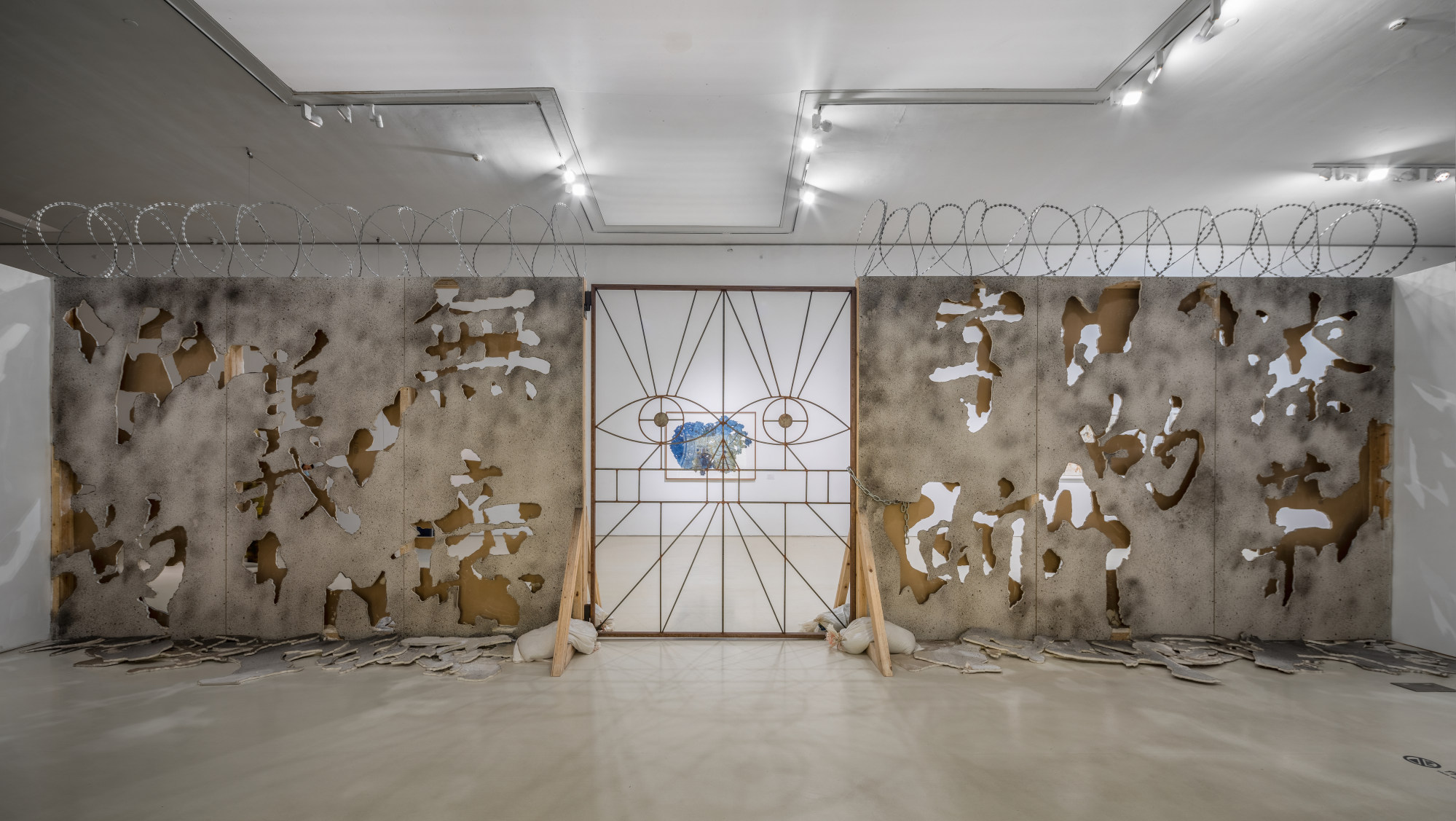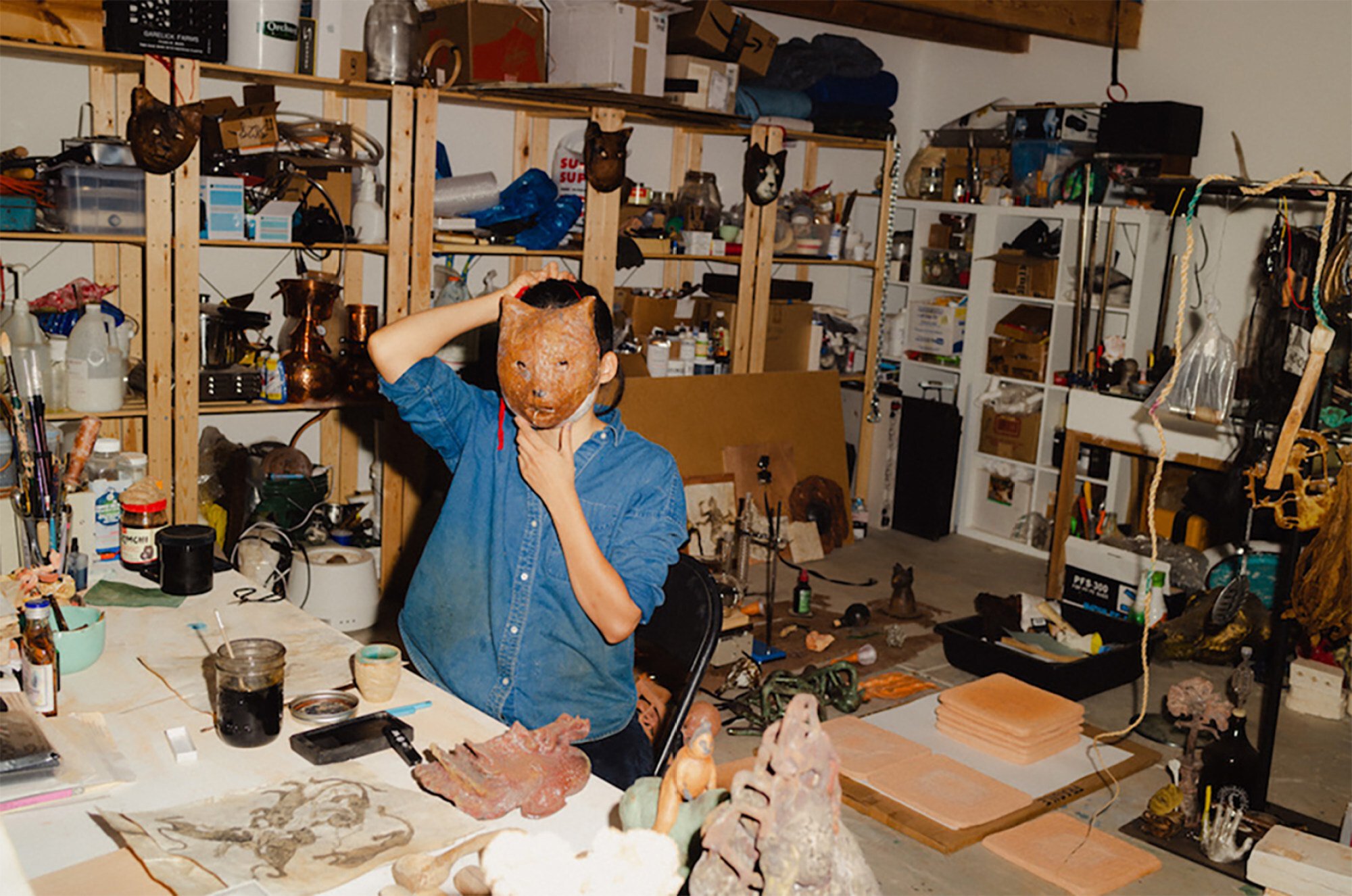
Candice Lin, Chinese-American artist, on her first solo show in China and its focus on the migrant experience
- A catapult hurling squelchy cannonballs at a wall in Guangzhou’s Times Museum alludes to rumours diseased corpses catapulted into a city started the Black Death
- It is one of several dramatic art installations in a show Lin says is her chance to show the Chinese people what it is like being part of an oppressed minority
A life-size model of a medieval wooden trebuchet (a medieval catapult) projects squelchy black cannonballs across a room. Made from bone black pigment and lard, these missiles create an abstract painting when smashed against the wall, and leave a trail of remnants oozing down to the floor, where what seem to be lumps of flesh appear to purr.
An installation by Los Angeles-based artist Candice Lin, A History of Future Contagion (2019) alludes to the rumoured origin of the Black Death, a bubonic plague that swept late medieval Europe – Mongol armies hurling diseased corpses over the walls of Kaffa, a fortified city in Crimea, in the mid 14th century – and is given added significance by the coronavirus pandemic that has swept the world since the work’s creation.
The work forms part of a touring solo exhibition of Lin’s work, called “Pigs and Poison”, which is on show at the Times Museum in Guangzhou, southern China. It has been shown at the Govett-Brewster Art Gallery in New Plymouth, New Zealand, and can also been seen at Spike Island, in Bristol in the UK.
The exhibition, of works all conceived before the Covid-19 pandemic began, examines the connection between Chinese contract labourers, referred to as “pigs”, who were transported to the United States of America in the 19th century, and that country’s economic growth – built on the growing of sugar cane, tobacco, and poppies. “Poison” refers to the opium derived from the poppies, the illegal smuggling of which led to the two opium wars between Britain and China.


Lin’s work also taps a history of racialised narratives about plague contamination and viruses, which has a disturbing sense of déjà vu amid the wave of violent attacks against Asian-Americans during the coronavirus pandemic.
“The violence has been so intense. It felt saddening and exhausting that it was so timely,” Lin says of this aspect of her show.

Also among the exhibits are two paintings, Chinatown, Honolulu 1900 (2020), and Chinatown, San Francisco 1907 (2020), depicting violence inflicted upon Chinese citizens who were blamed for plague outbreaks at those times.
Lin was born in the US to Chinese immigrant parents, and this is the first opportunity she has had to present her work to a primarily Chinese audience in China – something she sees as important.
“I realised this was my first opportunity to make a big show for a Chinese audience as a diasporic citizen,” Lin says. “A lot of it was thinking about my relationship to my parents’ generation and how different my experience has been growing up … compared to theirs. A large portion of Chinese audiences might not know what’s it like to be minoritized.”

Lin, who doesn’t speak Chinese, often found herself negotiating between translation and mistranslation, especially while listening to her family and friends speak and not fully understanding the conversation.
This sentiment is captured in A Robot Spoke What My Father Wrote (2019) – what Lin describes as “meaningless squiggles” inscribed on a grey-painted barricade topped with razor wire that marks the entrance to the exhibition. The work represents the idea of barriers such as language and those along borders that block the path of migrants.
“Part of why I look at history a lot in my work is because I need the distance and remove,” says Lin. “It’s been hard to make work that is so not distanced, that is so timely.”

She was drawn to working with unusual materials such as bone black pigment (made from burning animal bones) and cochineal (a dye made from crushed insects) by their tactile and sensual properties.
Bone black pigment, also called bone charcoal, was used to refine sugar on plantations where Chinese indentured labourers worked, and Lin incorporates it in many of her works. By emphasising the tactile nature of materials such as this and the aforementioned razor wire, Lin gives them political meaning.
Lin sees “Pigs and Poison” as the culmination of her artistic endeavours up until now. It elicits a visceral, unsettling reaction similar to that generated by an acclaimed 2016 exhibition of her work at Gasworks London, “A Body Reduced to Brilliant Colour”, that brought Lin’s work international attention.

While certain themes in the exhibition may hit a little to close to home for some, the artist hopes “it just reinforces things that we know and puts it in a form that may be helpful for people to understand current events” – thus doing exactly what art is supposed to do.
Candice Lin: Pigs and Poison, Times Museum Guangzhou. Until May 16, 2021.

